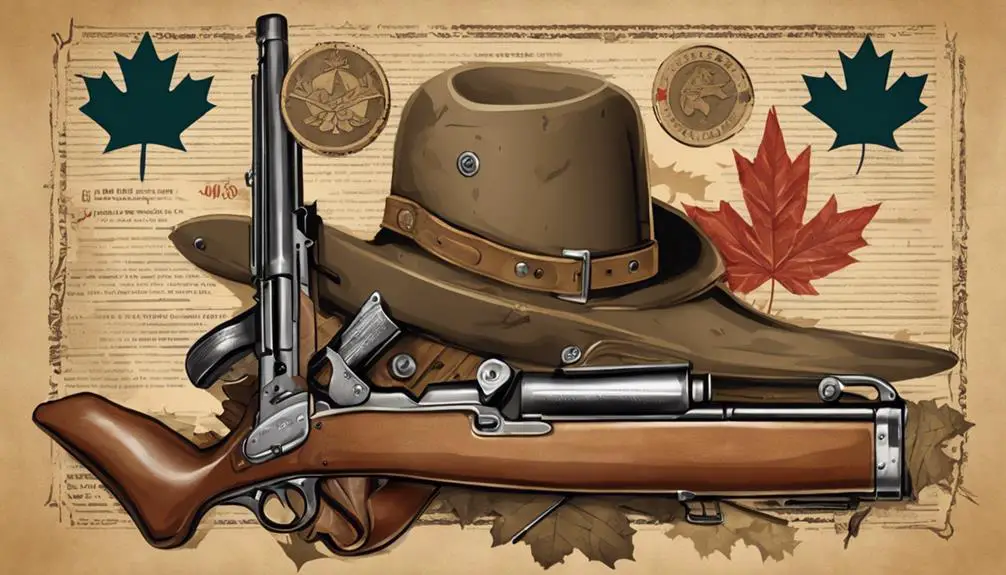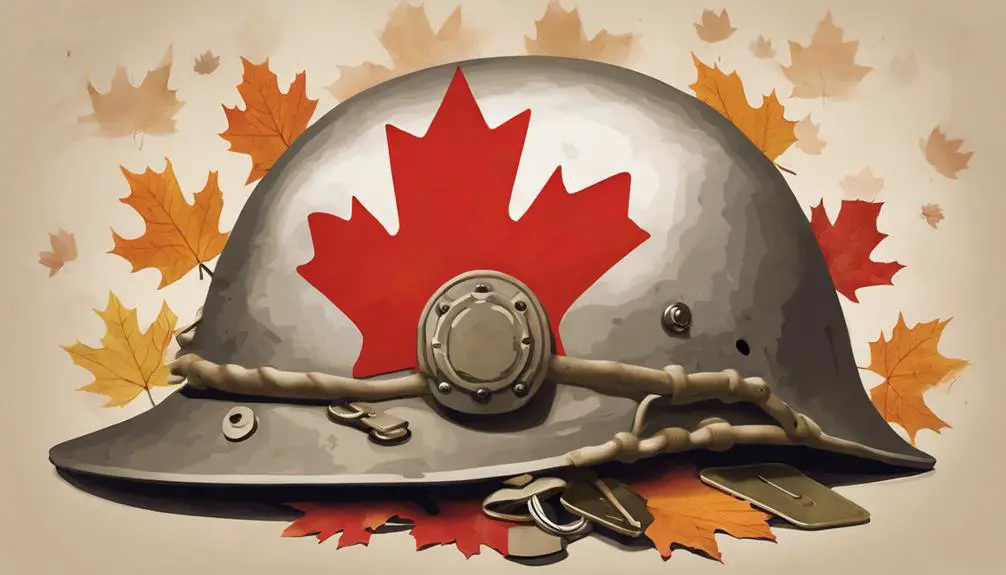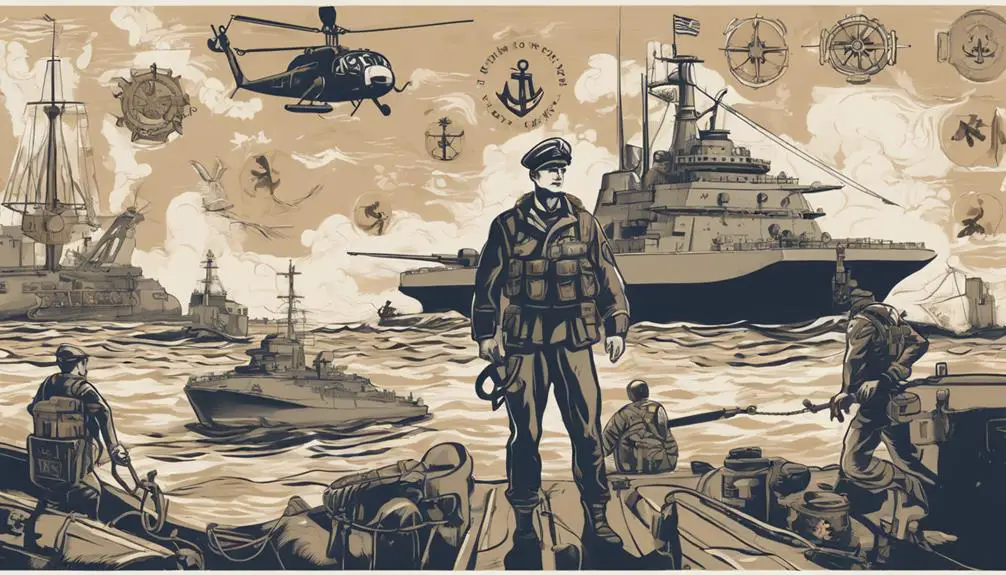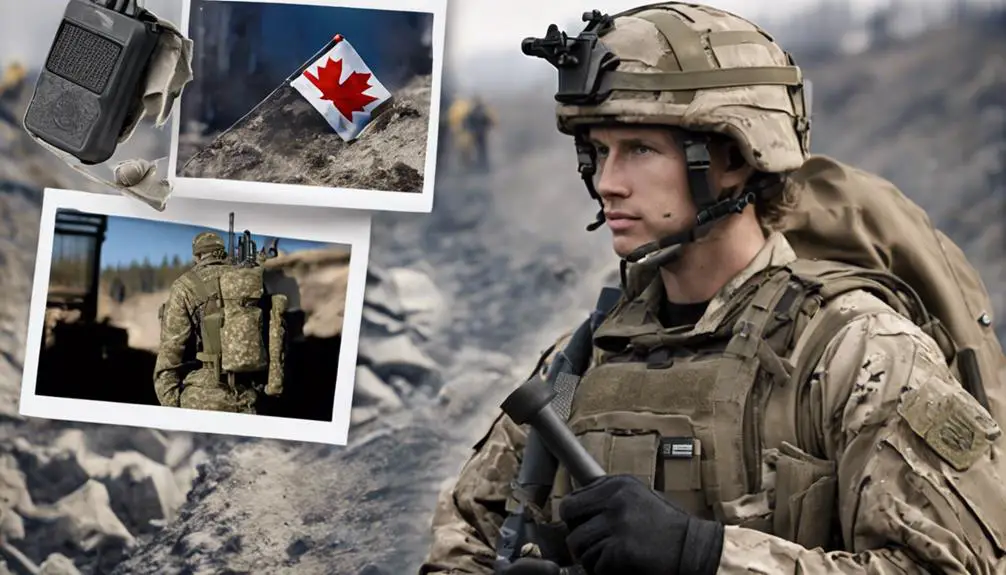You're interested in Canadian English military slang, which has its roots in the country's British colonial past. Over centuries, it has evolved to become a unique linguistic identity that reflects the cultural heritage and operational environments of the Canadian Armed Forces. From acronyms like "Bravo Zulu" for "well done" to colloquialisms like "bunk" for sleeping quarters, each branch has its own distinct slang shaped by culture, history, and operational environments. As you explore the nuances of Canadian military jargon, you'll uncover a complex language that's adaptable, efficient, and reflective of the country's military identity – and there's more to uncover.
Origins of Military Slang

Military slang in Canada has its roots in the country's British colonial past, with linguistic influences from the British Army and Navy that date back to the 18th century. As you explore the history of Canadian military slang, you'll find that it's deeply rooted in the cultural influence of British military traditions. The British Army and Navy introduced their own slang terms, which were later adopted and adapted by Canadian forces. This cultural exchange had a lasting impact on the development of Canadian military slang, shaping its unique flavor and tone.
Historical roots play a significant role in understanding the origins of Canadian military slang. As a result of British colonization, Canadian military forces were exposed to British military terminology, which eventually merged with indigenous and French influences. This blend of cultural influences has resulted in a distinct Canadian military slang that's both familiar and unique.
You'll notice that many slang terms have evolved from British military jargon, while others have been adapted to reflect Canadian cultural nuances. By examining the historical roots and cultural influence of Canadian military slang, you'll gain a deeper understanding of its significance and relevance in modern Canadian military culture.
Essential Acronyms and Abbreviations
As you explore the nuances of Canadian military slang, you'll quickly realize that a solid grasp of acronyms and abbreviations is essential for effective communication within the Canadian Armed Forces.
Understanding the origins and evolution of these shortened forms is vital for successfully maneuvering the complex world of military communication.
Acronym origins can be traced back to the need for brevity in radio communication during World War II. The use of acronyms like 'SITREP' (situation report) and 'COMMS' (communications) allowed for quick transmission of critical information. Over time, these abbreviations have evolved to include a wide range of terms, from 'OPS' (operations) to 'INTSUM' (intelligence summary).
Abbreviation evolution has been driven by the need for efficient communication in high-stress environments. Today, Canadian military personnel rely on a vast array of acronyms and abbreviations to convey complex information quickly and accurately.
As you explore further into the world of Canadian military slang, familiarizing yourself with these essential terms will become second nature, enabling you to communicate effectively with your comrades and stay ahead in the field.
Colloquialisms and Nicknames

You'll frequently encounter colloquialisms and nicknames in Canadian military slang, which serve as a unique window into the cultural identity of the Canadian Armed Forces. These colloquialisms, often born from shared experiences and camaraderie, reveal the nuances of Canadian military culture. They're an integral part of the Canadian military's linguistic landscape, offering a glimpse into the Forces' values, traditions, and sense of humor.
Here are a few examples of Canadianisms explained and Soldier sobriquets:
- 'Grit': a colloquialism used to describe a soldier's mental toughness and resilience.
- 'Ranch Hand': a nickname for a soldier serving in the Royal Canadian Armoured Corps.
- 'Chad': a tongue-in-cheek term used to describe a stereotypical, overly confident soldier.
These colloquialisms and nicknames not only add flavor to military communication but also serve as a reflection of the Canadian military's distinct identity. By understanding these terms, you'll gain a deeper appreciation for the cultural fabric of the Canadian Armed Forces.
Tactical and Operational Terms
Beyond the colloquialisms and nicknames that reveal the cultural identity of the Canadian Armed Forces, tactical and operational terms form the backbone of military communication, allowing you to navigate the complexities of military operations with precision.
These terms provide a shared language, ensuring that you can effectively convey and understand critical information in high-pressure situations.
Battle Drills, for instance, refer to standardized procedures for specific scenarios, such as responding to an ambush or conducting a room clearance. Mastering these drills enables you to react instinctively, minimizing confusion and maximizing effectiveness.
Situational Awareness (SA) is another pivotal concept, which involves maintaining a constant understanding of your surroundings, including the location of friendly forces, enemy positions, and key terrain features. Developing SA allows you to make informed decisions, anticipate potential threats, and adapt to changing circumstances.
Slang in Different Branches

Different branches of the Canadian Armed Forces, such as the Royal Canadian Navy, Canadian Army, and Royal Canadian Air Force, each have their unique slang, shaped by their distinct cultures, histories, and operational environments.
As you explore the world of Canadian military slang, you'll notice that each branch has its own flavor of jargon.
- In the Army, you'll hear Army Lingo like 'ruck' (backpack), 'tab' (march), and 'scran' (food). These terms reflect the Army's focus on mobility and logistics.
- In the Navy, Naval Jargon like 'deck' (ship's surface), 'galley' (kitchen), and 'scuttlebutt' (rumors) dominate conversations. These words reveal the Navy's emphasis on maritime operations and shipboard life.
- In the Air Force, you'll encounter terms like 'bird' (aircraft), 'flight line' (aircraft maintenance area), and 'squadron' (aviation unit). These words reflect the Air Force's focus on aviation and aerial operations.
Evolution of Military Jargon
As you explore the unique slang of each branch, it becomes clear that Canadian military jargon has undergone significant changes over time, reflecting shifts in technology, operational environments, and societal values.
The evolution of military jargon is a dynamic process, driven by language adaptation and cultural influence. You'll notice that military slang has adapted to new technologies, incorporating terms like 'drone' and 'cyberwarfare' into everyday conversation. At the same time, cultural influences from diverse recruits have enriched military language, introducing expressions like 'two-four' (a case of 24 beers) and 'chinook' (a warm winter wind).
As you investigate further, you'll find that military jargon has also evolved in response to changes in operational environments. For instance, the rise of counter-insurgency operations has led to the adoption of terms like 'hearts and minds' and 'winning the narrative.' Shifting societal values have prompted the military to adopt more inclusive language, replacing outdated terms with more respectful alternatives.
Decoding Military Communication

When you're immersed in military communication, deciphering cryptic messages and abbreviations becomes second nature, and you'll find yourself rapidly decoding phrases like 'OSUT' (One Station Unit Training) and 'SITREP' (Situation Report) to stay ahead of the operational curve. As you navigate the complex world of military communication, you'll need to be proficient in decoding crisis protocols, where every second counts.
In high-pressure situations, clear and concise communication is essential, and understanding radio etiquette is vital to guarantee seamless coordination.
To effectively decode military communication, keep the following principles in mind:
- Familiarize yourself with common abbreviations: OSUT, SITREP, and other acronyms will become second nature with practice and exposure.
- Understand radio etiquette: Know when to transmit, how to address calls, and the importance of brevity in critical situations.
- Stay adaptable: Be prepared to adjust to changing circumstances and new information, and be flexible in your communication approach.
Frequently Asked Questions
Can Non-Military Personnel Use Military Slang in Informal Settings?
When using military slang in casual conversations, it's important to bear in mind that language is constantly evolving.
However, utilizing military slang without being part of the military culture can be viewed as cultural appropriation.
In everyday language, it's crucial to take into account the origin and meaning of words to avoid misappropriation.
Before adopting military slang, ask yourself: do you truly grasp the context and history behind the terms?
Is Canadian Military Slang Different From American Military Slang?
You might be surprised to know that approximately 50% of military slang originates from civilian languages.
Now, let's delve into the question: is Canadian military slang different from American military slang? Yes, it is. Cultural influence and historical context play a significant role.
Canadian military slang has been shaped by British and French influences, whereas American military slang has been influenced by its own cultural melting pot.
Do Military Slang Terms Change With New Technological Advancements?
As you delve into the world of military slang, you'll notice that terms do change with new technological advancements.
The digital evolution has spawned a new wave of techno jargon, influencing the way military personnel communicate.
You'll find that acronyms and abbreviations emerge to describe cutting-edge tech, while outdated terms fade away.
This adaptability guarantees that military slang remains relevant, reflecting the dynamic nature of modern warfare.
Are There Any Military Slang Terms That Are Now Widely Used in Civilian Life?
You've noticed how military slang terms often seep into civilian life, right? It's a phenomenon known as 'crossover phrases.' These phrases, born in the barracks, have been adopted by civilians, sometimes without understanding their original context.
This raises questions about cultural appropriation. Are civilians using these terms as a badge of honor or simply because they sound cool? Either way, the lines between military and civilian language are blurring, and it's worth exploring the implications of this linguistic crossover.
Can Military Slang Be Used to Identify a Soldier's Rank or Unit?
As you venture into the world of military lingo, you'll discover that slang can be a subtle indicator of a soldier's rank or unit. Rank indicators, such as colloquial titles or specialized jargon, can hint at a soldier's position within the hierarchy.
Additionally, unit dialects, unique to specific branches or regiments, can also serve as identifying markers. By listening carefully, you might just decipher the code, uncovering clues about a soldier's background and affiliation.
Conclusion
As you decode the cryptic language of Canadian English military slang, remember that it's more than just a dialect – it's a badge of honor, a symbol of camaraderie forged in the trenches of service.
Like a finely-tuned machine, this unique lexicon has evolved to convey complex ideas swiftly, a tribute to the ingenuity and resilience of those who serve.
As you navigate this complex web of words, you'll uncover the very fabric of military culture, where brevity is key and meaning is everything.







